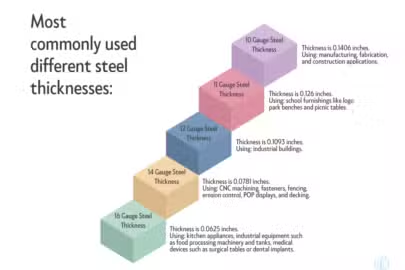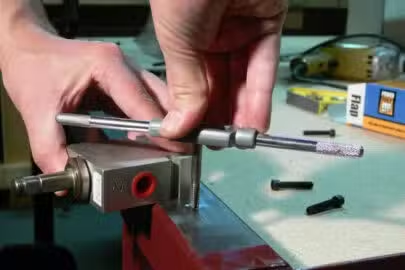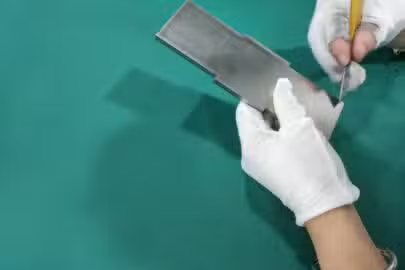Introduction
Die casting is a manufacturing process that involves heating metal alloys into the molten form before injecting them into a pre-made die mold where they solidify into the desired structure. The technique is suitable for vast applications, including creating intricate designs with high accuracy.

Also, the technique is highly versatile and compatible with many alloys, especially non-ferrous metals like zinc, magnesium, tin and aluminum. However, aluminum die casting, and zinc casting are the more common ones because of their unique properties that suit this manufacturing method.
This article explores the nuances between aluminum die casting vs zinc die casting, providing intricate details, including applications and variations in either process. Understanding these differences is vital before deciding which to select for your next die casting project.
Comparing the Process of Aluminum Die Casting vs Zinc Die Casting
Aluminum die casting and zinc die casting are comparable since they are the same manufacturing process. However, the distinction in the structural properties of either metal forms the basis of their differences.
Below, we explore the differences between aluminum die casting vs zinc die casting based on the following.
General Properties
The general properties, especially the mechanical characteristics, significantly influence the die casting process.
Conductivity
Aluminum alloys are known for their excellent conductivity, especially for electrical purposes. In fact, aluminum alloy also has better thermal conductive properties. Therefore, aluminum die casting ensures better heat dissipation and absorption efficiency. Because of this feature, aluminum die casting parts are ideal for components like heat sinks that get exposed to high-temperature conditions.

Moreover, aluminum has a higher melting point, meaning it can withstand more extreme temperature environments and retain its structural and physical features. Therefore, both alloys may prove effective for fabrications used in high-temperature conditions. Again, aluminum has better electrical conductivity, so it’s more appropriate for electrical purposes.
Melting Point
The melting point plays a crucial role since die casting involves heating a material to its molten form. That said, zinc has a lower melting point than aluminum, even though it is denser. Zinc’s density is 7.33 g/cm³, but melts at about 787°F, while the less dense aluminum is about 2.7 g/cm³ but melts at about 1220°F.
Because zinc melts at a lower temperature, it is suitable for hot chamber die casting, while the higher melting point of aluminum makes it a good choice for cold chamber casting. Moreover, zinc’s low melting point helps reduce production costs, hasten the production cycle times and increase tool life since the mold doesn’t get heated at extreme temperatures.
Corrosion Resistance
Zinc and aluminum form their oxides, which act as a protective covering upon exposure of the metals to atmospheric conditions. Therefore, both alloys are suitable for parts exposed to harsh environments. However, unlike zinc, which eventually breaks down and degrades over time, aluminum alloys have a self-healing ability; therefore, aluminum is more corrosion-resistant and may be more durable than zinc.
Tooling Life
Zinc alloys have a lower melting point and are less abrasive than aluminium. Therefore, molds used for zinc die casting are more likely to last longer than aluminum die casting ones. This is also similar to other die casting tools.
Weight
Regarding material weight, we already mentioned that zinc is more dense than aluminum. Therefore, zinc alloys generally weigh more than aluminium, making them more impact-resistant. However, zinc die castings are unsuitable for lightweight fabrications, though they may prove beneficial for castings that require high structural integrity.
Surface Finishing Options
Often, manufacturers need to engage in surface finishing to improve the appearance and surface properties of die casting parts. Whether it is zinc die casting, or aluminum, they are prone to die casting defects, such as the formation of pores, blisters, shrinkage, etc.
That said, both zinc and aluminum respond well to different surface finishing. However, aluminum being the more popular choice for manufacturing, has a more extensive surface finishing option, including painting, plating, electroplating and anodizing.
Production Cycle Times
We already hinted at the disparity between the production cycle times of zinc and aluminum die castings. Zinc generally has a lower cycle time because it occurs at a low melting point using the hot chamber die casting process. Therefore, zinc die casting is more energy efficient, and the manufacturing process is faster.
Manufacturing Costs
The cost of any manufacturing process depends on various criteria, including the material costs, manufacturing process, operator’s expertise, surface finishing options, production volume, cycle time, etc. However, die casting is generally cost-effective, especially compared to CNC machining and 3D printing.
Aluminum is typically more expensive than zinc, mainly because of its more favorable properties in the maturing space. In fact, aluminum is among the most used metal in manufacturing. However, other factors influencing costs are not direct with different variations.
Differences Between Aluminum vs Zinc Die Casting Process
Aluminum and zinc die casting follow similar processes – both are typically die casting subsets. However, the main difference is because of their mechanical features, mainly the melting point variation.
Below is an overview of the differences in the die casting processes.
Casting Temperature
We already mentioned that aluminum has a higher melting point than zinc. Aluminum die casting follows the cold chamber process, while zinc uses the hot chamber die casting process. After heating aluminum into the molten form, it is passed into the cold chamber and forcefully injected into the die cavity under high pressure.
However, in the case of zinc, the die casting device is integrated with the furnace where the melting of the zinc metal occurs. Therefore, after heating the metal into liquid form, it is directly injected into the die without going through an extra chamber.
Note that both processes occur under high pressure using hydraulics.
Energy Consumption
Comparing either process used in fabricating aluminum and zinc die casting parts; aluminum will consume more energy, requiring higher heating temperature. Moreover, the cold chamber process requires more power since the aluminum is first heated in a distinct furnace before the high-pressure injection. However, the entire zinc die casting process occurs in the same machine, making it more energy-efficient.

Tooling and Costs
Cold chamber aluminum die casting uses extra tooling; the heating furnace is distinct before ladling the molten metal into the shot chamber. Moreover, it consumes more energy, so it may require additional costs. However, the cold chamber die casting is relatively less abrasive than the bot chamber, which may mean less maintenance.
Since the cold chamber is for higher melting point metals, the molds experience higher temperatures and stress, which may reduce their lifespan. All these variations may make aluminum die casting slightly more expensive than zinc die casting. Moreover, aluminum alloys are generally more costly than zinc.
Applications of Aluminum Die Casting vs Zinc Die Casting
Aluminum and zinc are two common metals for manufacturing purposes, including die casting parts. That said, aluminum and zinc die casting share similar advantages in manufacturing parts. Often, the choice of metal for die casting depends on the manufacturer, though other factors, such as weight and part functionality, may come into play.
Below is an overview of the common parts both processes fabricate.
| Applications | Aluminum Die Casting | Zinc Die Casting |
| Automotive Parts | Engine components, car chassis, transmission components, and car body | Door handles, interior aesthetic components and trims, fuel and power steering system |
| Industrial components | Machine parts, pump housings and brackets | Machine valves, connectors and fittings |
| Electrical components | Heat sinks, electronic casings and connectors | Housings and enclosures for small electrical gadgets, connectors |
| Aerospace | Structural components, body parts, brackets | Zinc is rarely used in aerospace because of its high-density |
| Power tools | Housings and enclosures for power tools, part of lawnmowers. | Mainly used to create handles for these tools. |
| Household items | Consumer electronics and parts, handheld tools | Mainly for decorative components and handles of household tools. |
Generally, aluminum and zinc die casting parts share similar applications; we just focused on what manufacturers use either alloy for. For example, zinc die casting parts may also be used in creating engine components and heat sinks.

However, zinc is rarely used in the aerospace industry because of its high density. In fact, zinc use is limited in the manufacturing of interior design of high-end vehicles.
In the subsequent two headings, we will compare zinc die casting vs aluminum die casting, providing reasons why you should choose one over the other in both scenarios.
Reasons to Choose Zinc Die Casting
We have already discussed the general advantages of aluminum and zinc die casting. Below, we investigate why you should choose zinc die casting for fabrication.
Fast Production Cycle
Zinc has a lower melting point, making it suitable for quicker hot chamber die casting. In the hot chamber die casting, heating and injection of the metal ingots occur in the machine. However, for cold chamber die casting, as used for aluminum, the metal is first heated in a different compartment before being forced into the cold chamber, and then it is eventually injected.
Therefore, zinc die casting is a more efficient and quicker manufacturing process. This efficiency is particularly beneficial for bulk-volume production, where time is a limiting factor. So, if dealing with a project that doesn’t specify the alloy choice, you can use zinc die casting; just ensure that the zinc alloy suits the intended fabrication.
Suitable for Fabricating Thin Wall Parts
Zinc alloy impact characteristics and tensile strength make it ideal for fabricating thin-walled structures. When in molten form, zinc shows good fluidic properties that make it suitable for creating intricate designs and thin wall sections. However, zinc is not a good choice for lightweight fabrications because of its relatively high density. Still, it’s suitable for parts requiring stability and structural integrity.
Reduced Residual Stress
The features of zinc die casting – its reduced melting temperature and injection pressure – help minimize residual stress during the solidification of the alloy. Therefore, there’s a reduced stress tendency in zinc die casting parts. This feature even benefits the fabrication of components with strict dimensional stability and tolerance requirements.
Suitable for Fragile Die Casting Molds
Since zinc die casting does not allow the die cast mold to experience high temperature and lower injecting pressure, like aluminum, it helps to ensure longer tool life. Therefore, zinc metal is better for working with fragile die casting mold. Casting zinc causes less stress on the mold, resulting in a reduced wear and tear experience. Therefore, zinc molding is a more cost-effective and sustainable die casting approach.
Reasons to Choose Aluminum Die Casting
Aluminum is one of the most used metals for parts fabrication. However, it may not be the best choice for die casting, because of its high melting point, though it’s still a popular choice for the technique because of its good mechanical properties.
Below are reasons you should consider using aluminum for die casting parts.
Electrical Conductivity
Compared to most metals and alloys for manufacturing, including steel and zinc, aluminum has excellent electrical conductivity. This makes aluminum die casting a popular choice for electrical die cast components. Its conductivity ensures optimal functioning and durability for vast applications, especially those that require efficient heat dissipation.
Strength-to-weight Ratio
Besides the excellent mechanical properties of aluminum, its strength-to-weight ratio is one of its most essential features that make the metal a popular choice for parts fabrication. Aluminum is known for its lightweight; however, the impressive feature is its considerable strength, especially its weight.
Therefore, aluminum die castings are suitable for lightweight fabrication yet maintain reasonable tensile strength to support the part’s structural integrity. Such aluminum die cast parts find application in the aerospace and automotive sectors, where weight reduction is critical.
High Operating Temperatures
Compared to metals like zinc, lead and tin, aluminum has a relatively high melting point. This makes aluminum die casting parts more suitable for applications with high-temperature exposure. Therefore, aluminum die casting will be a good choice in fabrications where the components must ensure high temperatures. The high melting point ensures that the part retains most of its structural and mechanical properties upon exposure to those extreme conditions.
Contact Zintilon for Aluminum and Zinc Die Casting
Having a good understanding of a manufacturing process, including the suitable metal options for that process, is vital. Another essential practice to ensure high-quality fabrication is to partner with a reputable service provider.
Zintilon is an expert in offering high-quality aluminum and zinc die casting services. Our facilities consist of highly skilled personnel and engineers with the knowledge to ensure optimum casting of your part.
Don’t hesitate to contact us if you are unsure of the suitable alloy for your project or manufacturing process, as we can advise you on the best approach for your fabrication. Besides die casting, we offer top-quality services in CNC machining, sheet metal fabrication, rapid prototyping and other related technologies.
Conclusion
The comparison between aluminum die casting vs zinc die casting suggests that either process yields high-quality parts. In fact, both processes are suitable for similar fabrication. However, aluminum remains the go-to metal for lightweight fabrication, while zinc is the better choice between the two metals for strong and tough parts.
When you doubt which alloy to use for your die casting project, do not hesitate to review this article to get insight into the better alloy for your design.
FAQs
Is Zinc Better Than Aluminum for Die Casting Parts?
Zinc and aluminum have unique properties that are advantageous to die casting parts. Zinc die casting may be the more beneficial technique, especially for the service provider, though it still depends on your specifications. For example, aluminum die casting is better for lightweight parts.
Which is Stronger? Zinc Die Casting Parts vs Aluminum Die Casting Parts.
Generally, zinc metal is more robust and denser than aluminum. The same feature applies to its die casting parts; zinc may be more than two times stronger than aluminum die castings parts.
What Are the Advantages of Aluminum Die Casting?
The main advantage of aluminum die casting is its strength-to-weight ratio. While aluminum has a lesser density than many other metals like zinc, it possesses considerable strength, making its die casting parts suitable for vast applications. Therefore, aluminium is the best choice when a die casting fabrication requires a balanced strength with lightweight.





